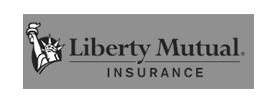
Let’s face it: insurance isn’t the most thrilling topic. But it’s a necessary part of responsible adulting. And if you’re like most people, you’re looking for ways to save money without sacrificing essential coverage. That’s where bundling your auto and home insurance comes in.
At Aspen Insurance Agency, we’ve seen firsthand how bundling can benefit our clients. It’s not just about saving a few bucks; it’s about simplifying your life and ensuring you have comprehensive protection.
What is Bundling, anyway?
Simply put, bundling means purchasing multiple insurance policies from the same provider. In this case, you’re combining your auto insurance and your homeowners (or renters) insurance under one umbrella.
The Perks of Bundling: More Than Just a Discount
While the most obvious advantage is cost savings, bundling offers several other benefits:
- Significant Savings: This is the big one! Insurance companies often offer substantial discounts for bundling policies. These discounts can range from a few percentage points to significant savings on your overall premium. Think of it as a loyalty reward for consolidating your coverage.
- Simplified Management: Dealing with multiple insurance companies can be a headache. Bundling streamlines your insurance experience. You’ll have one point of contact, one billing cycle, and one online portal to manage your policies. This simplifies everything from paying bills to filing claims.
- Comprehensive Coverage: Bundling encourages you to review your overall insurance needs. This can lead to identifying potential gaps in coverage and ensuring you have adequate protection for all your assets.
- Easier Claims Processing: If you need to file a claim, dealing with one company is generally smoother and faster than dealing with multiple insurers. In some cases, if a single event affects both your home and vehicle, having bundled policies can simplify the claims process.
- Increased Loyalty and Relationship Building: When you bundle, you build a stronger relationship with your insurance provider. This can lead to better customer service and personalized attention.
Who Should Consider Bundling?
- Homeowners and Renters: If you own or rent a home, you need homeowners or renters’ insurance. If you also own a vehicle, bundling is a no-brainer.
- Anyone Looking to Save Money: Who doesn’t want to save money? Bundling is a simple way to reduce your insurance costs.
- Those Seeking Simplicity: If you’re tired of juggling multiple insurance policies, bundling can simplify your life.
What to Consider When Bundling:
- Compare Quotes: Even with bundling discounts, it’s essential to compare quotes from multiple insurance providers. Make sure you’re getting the best value for your money.
- Review Your Coverage: Take this opportunity to review your current coverage and ensure it meets your needs. Don’t sacrifice essential coverage for a lower price.
- Ask Questions: Don’t hesitate to ask your insurance agent about bundling discounts and any other questions you may have.
Ready to Bundle and Save?
At Aspen Insurance Agency, we’re here to help you find the right insurance solutions for your needs. Contact us today for a free quote and see how much you can save by bundling your auto and home insurance. We’ll walk you through the process and help you find the best coverage at the best price.
Don’t miss out on the opportunity to simplify your life and save money. Bundling your insurance is a smart move that can provide peace of mind and financial benefits.































































